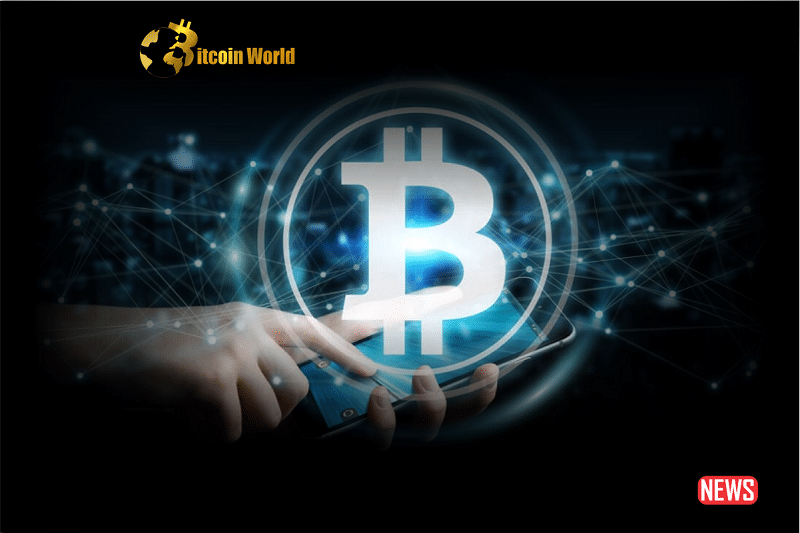Hold onto your hats, crypto enthusiasts! The Bitcoin network is buzzing, and not just with typical transactions. We’re witnessing a fascinating phenomenon: a significant spike in transaction fees, driven by the rise of Ordinal inscriptions and the BRC-20 token standard. But what does this mean for Bitcoin’s future? Let’s dive into the details.
What’s Causing the Bitcoin Fee Frenzy?
Recent data from Dune Analytics paints a clear picture: the cost of inscribing Ordinals has exploded. On a single Tuesday, over 272 BTC – nearly $7.6 million – was spent on these inscriptions. To put that in perspective, daily network fees alone reached 23 BTC, or around $660,000. Monday saw a staggering 372,000 inscriptions, contributing to a record-breaking 682,281 Bitcoin transactions in a single day!
So, what’s the driving force behind this surge? According to Trevor Owens, Managing Partner at Bitcoin Frontier Fund, it’s largely due to BRC-20 tokens. This new token standard has made it possible to issue tokens and even meme currencies directly on the Bitcoin blockchain. In less than a week, over a million new inscriptions joined the existing 2.5 million, showcasing the rapid adoption of this technology.
BRC-20: The New Kid on the Block(chain)
- Born from Ordinals: BRC-20, short for Bitcoin Request for Comment number 20, leverages the Ordinals protocol.
- Fungible Tokens on Bitcoin: Released in March, it unlocked the ability to create fungible tokens, similar to ERC-20 tokens on Ethereum, directly on the Bitcoin network.
- Renewed Interest in Bitcoin NFTs: This sparked a wave of interest in creating NFT-like assets within the Bitcoin ecosystem.
Beyond JPEGs: The Rise of Text Inscriptions
While the image of JPEGs clogging the internet might come to mind, the reality of Ordinals is a bit more nuanced. Interestingly, the majority of inscriptions are still text-based. Why? As Owens points out, text inscriptions are more cost-effective. You pay for the amount of data you use, making text a cheaper, high-volume option compared to larger media files like JPEGs.
Is This Strain on the Network a Problem?
The influx of inscriptions is definitely having an impact on the Bitcoin network. Mempool statistics show memory consumption exceeding 650 MB, double the original 300 MB capacity. This increased demand for memory leads to larger blocks and can make running a Bitcoin node more resource-intensive.
The Debate: Strain vs. Strength
While some worry about the strain, proponents of Ordinals argue that this increased activity ultimately strengthens the network. Let’s break down the arguments:
| Argument For | Argument Against |
|---|---|
| Increased fees reward miners, incentivizing network participation. | Higher transaction fees make everyday Bitcoin transactions more expensive. |
| Prioritizes value transactions, as users are willing to pay more for faster confirmation. | Can exclude users who cannot afford higher fees. |
| Fortifies network security by making it more expensive to attack. | Increased mempool size can lead to longer confirmation times for lower-fee transactions. |
The Bullish Case for High Bitcoin Fees
Anonymous Twitter user @LeonidasNFT sees the rising fees as a positive sign. Their perspective is that as long as the value gained from minting BRC-20 tokens outweighs the inscription fees, the demand will persist. This, in turn, signifies a strong demand for Bitcoin’s limited block space, which is crucial for the protocol’s long-term viability.
As Leonidas puts it, the days of solely using Bitcoin for infrequent hardware wallet transfers are over. The network is evolving, finding new use cases, and experiencing increased demand for its core resource: block space.
Real-World Impact: The Taproot Wizards Example
The impact of these rising fees is tangible. Consider the Taproot Wizards collection. When inscribed in February, it occupied over 80MB of Bitcoin block space. According to a tweet from the team, attempting the same inscription today would cost a staggering 32 BTC – nearly $1 million in fees!
Is This the Key to Bitcoin’s Mass Adoption?
Trevor Owens believes the emergence of Ordinals is a significant step forward for Bitcoin. He highlights the fact that this growth occurred without requiring any modifications to Bitcoin’s underlying protocol.
Unlocking New Potential
Owens argues that to achieve mass adoption, Bitcoin needs:
- Increased Value: New use cases drive demand and perceived value.
- Improved User Experience: Making Bitcoin easier and more versatile to use.
- More Use Cases: Expanding beyond simple value transfer.
He sees Ordinals and BRC-20 as unlocking these crucial elements, bringing in new liquidity, attracting new users, and fostering a wave of developer activity within the Bitcoin ecosystem.
The Road Ahead
The surge in Bitcoin fees driven by Ordinals and BRC-20 tokens presents both challenges and opportunities. While higher fees can impact accessibility for some users, they also incentivize miners and potentially strengthen network security. The emergence of new use cases and the influx of developers suggest a vibrant and evolving Bitcoin ecosystem. Whether this trend truly marks the beginning of mass adoption remains to be seen, but it undoubtedly signifies a significant shift in how the Bitcoin network is being utilized and perceived.
Disclaimer: The information provided is not trading advice, Bitcoinworld.co.in holds no liability for any investments made based on the information provided on this page. We strongly recommend independent research and/or consultation with a qualified professional before making any investment decisions.


